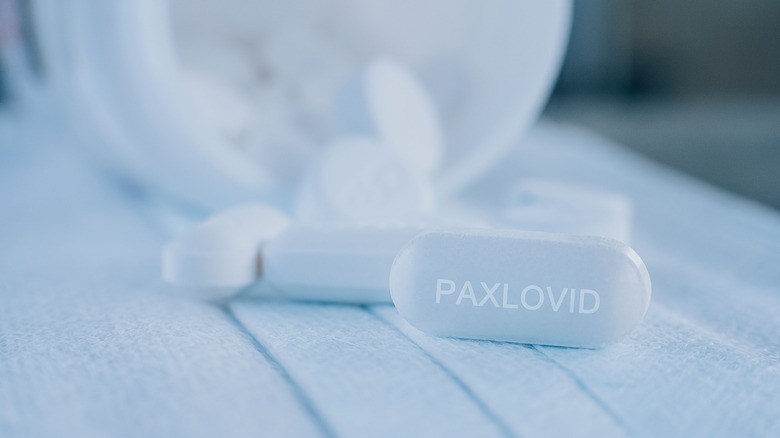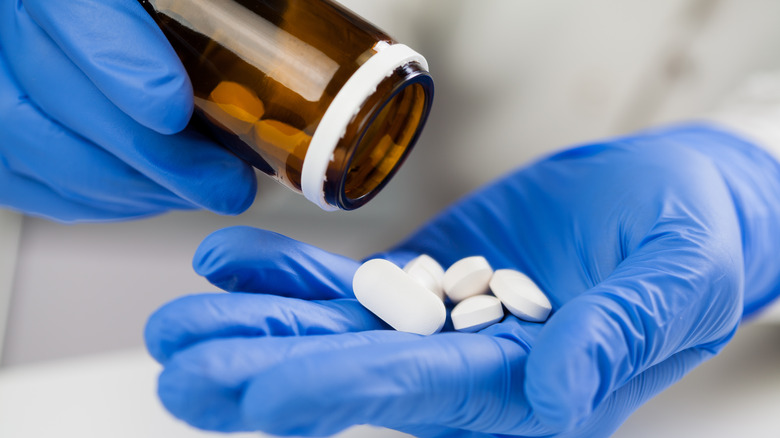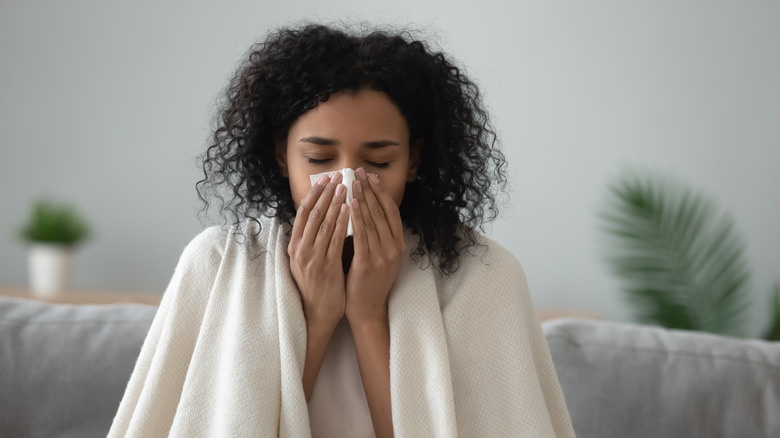Dr. Michael Blaivas Of Anavasi Diagnostics On What To Expect After Taking Paxlovid For COVID - Exclusive
We get it — you're totally and completely over COVID and all the precautions and panic that surrounded it back in 2020. And yes, things have gotten better: Vaccines for COVID are regularly available, and while they can't block all infections, they'll almost always keep you out of the hospital if you do catch the virus. In addition, new treatments, including Paxlovid, have proven effective at cutting short the course of the disease if taken soon after infection.
But one thing hasn't changed: COVID is still no joke. New variants of the virus can slip past vaccines' defenses more easily, and while they're unlikely to cause severe illness if you're fully vaccinated, they can still ruin your week (not to mention that of those around you). In addition, treatments for COVID, such as Paxlovid, can be difficult to obtain.
If you are lucky enough to get access to Paxlovid within five days of infection, taking it properly and monitoring your condition closely are essential for your safe recovery. In an exclusive interview, Dr. Michael Blaivas, chief medical officer of Anavasi Diagnostics, explained how Paxlovid works and what to expect after taking it.
Here's how Paxlovid works
Dr. Michael Blaivas explained that Paxlovid is an antiviral, which means it works by targeting the virus itself, rather than the symptoms of the infection. "Paxlovid interferes with the virus's ability to replicate or multiply, preventing the progression from mild to severe disease," he explained. "This is why it is important to give the medication early in the disease process."
He added that Paxlovid is in fact two drugs. "Paxlovid is actually a combination of two medications, nirmatrelvir and ritonavir," he said. "These are both antiviral medications. Nirmatrelvir is a new medication recently developed for COVID, and ritonavir is an older one that helps nirmatrelvir to function better, hence the combination of the two."
This means it takes some time for Paxlovid to do its job — the medication must be taken for five days — so don't expect instant relief after your first dose. "The main thing is that the patient taking it should not feel worse than before because the disease should not progress to a more severe state," Dr. Blaivas said.
Paxlovid side effects you should know about
Like many medications, Paxlovid has a set of known and expected side effects. Indeed, these side effects sound a bit like symptoms a person with COVID may already be experiencing. "You can have some mild side effects from taking Paxlovid, such as muscle aches, diarrhea, and others, but in general, you should start to feel better within a few days," Dr. Michael Blaivas said.
While mild side effects are no cause for alarm, Dr. Blaivas warns patients to look out for any symptoms that seem severe or unexpected. "Keep in mind that Paxlovid has not been used on that many people, so if you start having significant symptoms of any kind, it is important to report them to your doctor," he said. He added that rebound infections, while rare, are also possible even after a full course of Paxlovid. "In case you start having your Covid symptoms come back after taking Paxlovid, assume you may be infectious again, isolate, and get a reliable and accurate molecular COVID test like AscensioDx and others," he said.
For the latest COVID-19 news, make sure to keep up to date with current guidelines shared by the CDC and WHO. To learn more about the latest industry news related to molecular diagnostics, visit Anavasi's website https://www.anavasidx.com/industry-news.



